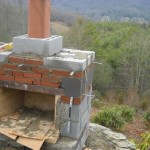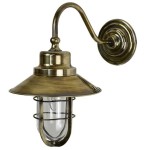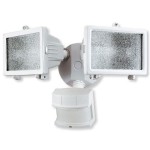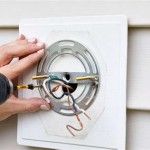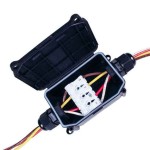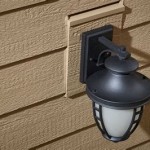Essential Aspects of Installing Low Voltage Outdoor Lighting
Low voltage outdoor lighting serves as an integral aspect of modern home aesthetics and security. Understanding the crucial aspects of its installation allows for optimal performance and longevity. This article will delve into the essential elements of installing low voltage outdoor lighting.
Transformer Selection and Placement
The transformer is the heart of the low voltage lighting system, converting high voltage power to a safe low voltage. Selecting an appropriate transformer size ensures adequate wattage for all connected fixtures. Proper placement is crucial, situating it in a dry, sheltered area that remains accessible for future maintenance.
Wire Selection and Burial
Choosing the correct wire gauge is essential to minimize voltage drop and system losses. Direct burial cable, designed for underground installation, provides protection from moisture and physical damage. Burying the wire at a depth of at least 6 inches ensures durability and prevents accidental damage.
Fixture Selection and Installation
Outdoor lighting fixtures come in a wide variety of styles and functionalities. Selecting fixtures that complement the architectural style and functionality of the outdoor space is crucial. Proper installation involves securing the fixtures firmly to prevent movement or damage, ensuring a professional-looking finish.
Lighting Layout and Zoning
The strategic placement of lighting fixtures creates a cohesive and functional outdoor space. Consider the desired lighting zones, such as pathways, seating areas, and architectural features. Using a combination of fixtures with varying beam angles and intensities allows for effective illumination and highlights specific areas.
Power Supply and Control
Ensuring a reliable source of power is essential. Connecting the system to a dedicated circuit breaker provides necessary protection. Incorporating timers or dimmers allows for automation and energy efficiency, controlling lighting duration and brightness levels as needed.
Safety and Maintenance
Low voltage outdoor lighting, while inherently safer than high voltage systems, still requires proper handling. Following electrical safety guidelines, including wearing gloves and using insulated tools, is crucial. Regular maintenance, such as cleaning fixtures and inspecting wiring, ensures optimal performance and longevity of the system.
Conclusion
This article has highlighted the essential aspects of installing low voltage outdoor lighting, including transformer selection, wire choice, fixture installation, lighting layout, power supply, and safety considerations. By carefully following these guidelines, homeowners can achieve a beautifully lit and secure outdoor space.

How To Install Low Voltage Outdoor Landscape Lighting 1000bulbs Blog

How To Install Low Voltage Outdoor Landscape Lighting The Garden Glove

Outdoor Low Voltage Lighting Diy Family Handyman

How To Install Low Voltage Landscape Lighting System World Leader In Cables

3 Must Haves For Installing Low Voltage Landscape Lighting Ideas Advice Lamps Plus

Louie Lighting Blog Low Voltage Landscape Install

The Easiest Way To Install Low Voltage Landscape Lighting Abby Organizes

How To Design And Install Low Voltage Outdoor Lighting

Install Low Voltage Outdoor Lighting For Fall Sposato Irrigation

How To Install Low Voltage Landscape Lighting For The Diy Er
Related Posts
